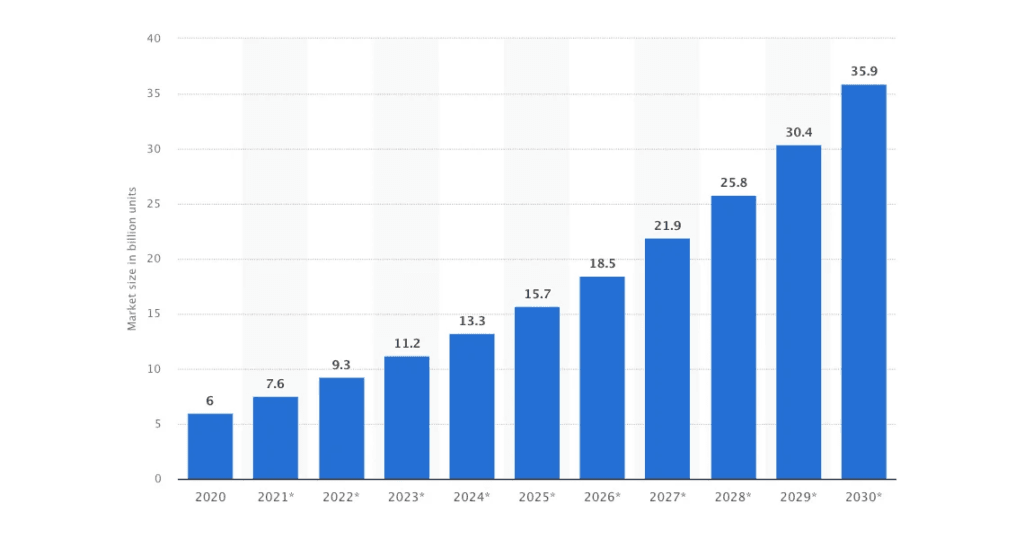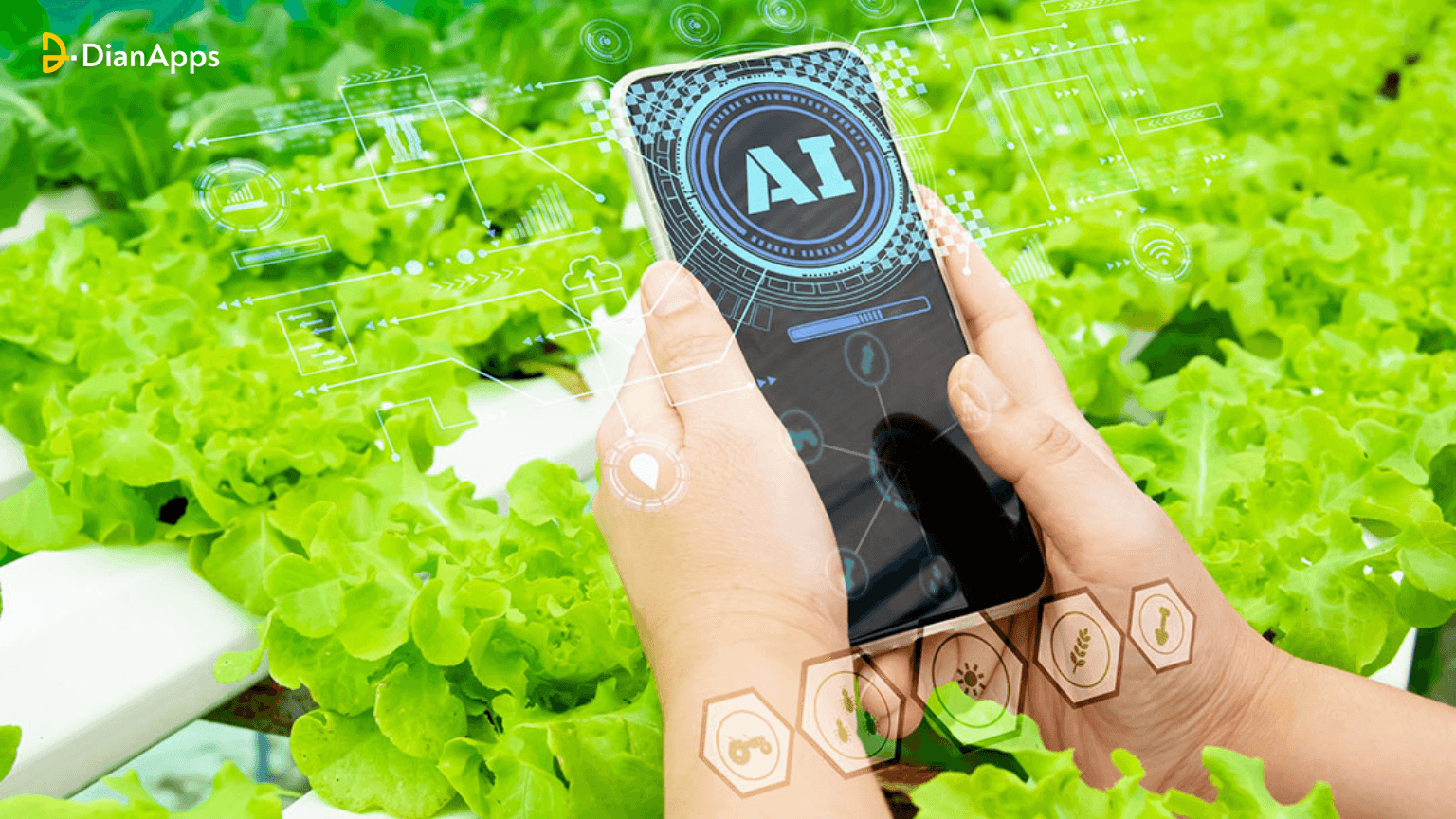Agriculture has been a very crucial part of our lives. Between the traditional ways of farming lies the upliftment of technology that has changed the direction of the agriculture industry.
Gone are the days when farmers had to do all things with their bare hands. From sowing the plant seeds to continuous watering and taking care of the field they had to do all the tasks by themselves.
But that’s the old news now!
Agriculture farmers and tech experts have merged the idea of Doing The Smart Work, commonly known as the AgTech Industry today!
In this, Artificial Intelligence has been playing a very important role by pacing the farming process through smart technologies and doing field analysis alongside constant monitoring to save time for farmers and give effective results.
Ever since this AgTech collaboration was initiated, the world is expecting to grow at a CAGR of 23.1& between 2023 and 2028. This means, that by the year 2028, the agriculture department will grow from 1.7 billion to USD 4.8 billion.
Isn’t that something to cherish as an individual and as a business owner?
We are becoming modern every day which also indicates that AI will revolutionize even further in the AgTech industry. Want to find all the insightful details?
Let’s see how AI is critical to this industry in 2024 and beyond.
The Market of Agriculture Industry After The Inception of AI
- It is anticipated that the global market value of smart farming will be around 15 billion US dollars in 2022 and will grow by 33 billion US dollars by 2027.
- The worldwide smart manufacturing industry is expected to reach over 650 billion dollars (or 277 billion US dollars in 2022) by 2029 as a result of the growing adoption of AgTech.
- Robots and big data analytics are used in smart manufacturing to increase productivity, reduce environmental impact, and improve adaptability.

- As per Statista’s Agriculture Industry Insights, it is anticipated that the worldwide market for agricultural robots will reach over 36 billion units by 2030.
The future of artificial intelligence (AI) in agriculture appears to be quite bright, as indicated by the projected statistics. This future will be characterized by creativity, sustainability, and efficiency as AI is used to create a more resilient and productive agricultural environment.
Let’s move on to the challenges faced by agriculture farmers before Artificial Intelligence solutions were introduced to them.
Challenges of Traditional Methods Of Framing
The constraints of conventional agricultural systems become more evident as the globe experiences a boom in population and uncertainty around climate change. The following are some of the difficulties conventional farmers encounter, which highlights the pressing necessity to adopt cutting-edge techniques:
1. Unprecedented Weather Patterns
Traditionally, farmers have little access to reliable weather forecasts when they seek to schedule their agricultural operations. Farmers take on more risk when they don’t have timely information, which influences when they decide to plant when to water, and when to harvest. Inaccurate planning caused by imprecise weather forecasts frequently had an impact on crop yields and total farm output.
2. Making Unfavorable Decisions
Farmers are forced to make important judgments about soil preparation, crop selection, planting dates, and other matters solely based on prior experiences in the absence of sophisticated technologies, sophisticated tools, or real-time data. These poorly informed decisions frequently result in poor decision-making, which in turn causes deficit harvest.
3. Management of Diseases and Pests
Farmers who use the conventional method of managing pests and diseases sometimes discover the infestation or disease spread after significant harm has already been done to the crop sections. This results in significant agricultural losses; estimates range from 20% to 40% of yearly worldwide crop yield lost to pests.
4. Work-Intensiveness
Agriculture has long been perceived as a labor-intensive, physically taxing activity requiring a sizable staff. Farming is an expensive endeavor due to the significant operating expenditures in addition to the need on personnel to complete the task on schedule.
5. Food Loss and Waste
Food loss and waste are some of the main issues that arise in the farm-to-table supply chain. The lack of appropriate instruments to help conventional farmers properly predict market demand is the root cause of this problem. It frequently causes overproduction or underproduction, which wastes money that could have been saved.
These were some common problems in the traditional way of framing. It’s time to observe the contribution of Artificial intelligence in the Agricultural landscape.
Contributions of AI in The Agriculture Management Lifecycle
Since 10,000 B.C., when the first agricultural revolution occurred, humanity has advanced significantly. Another name for the application of AI in agriculture is the “silent revolution,” which is transforming traditional farming methods.
In the current day, when tradition and technology live together, artificial intelligence (AI) emerges as a key force that is transforming the agriculture lifecycle at every stage. Here’s how AI may be smoothly incorporated into every stage of the agriculture lifecycle, from soil preparation to planting, watering, harvesting, and storing:
1. Getting the dirt ready
Farmers confront uncertainty, unpredictability, second-guessing, and more while preparing the soil in the absence of AI or software app development services. It was more art than science since farmers had to make decisions about every facet of soil preparation, including tilling, plowing, adding organic matter, creating ridges and narrows, and more, based on their gut feelings and years of expertise with the soil.
The cost of imprecision falls on the crop!
With AI, their judgments are guided by precise data rather than conjecture!
Real-time soil data is gathered using AI-powered soil sensors or AI-driven machines outfitted with intelligent sensors. Additional AI algorithms examine the chemical makeup of soil samples, providing information on critical variables such as moisture content, nutrient levels, and composition of the soil. Aside from that, historical weather data analysis and you can accomplish future pattern prediction with AI algorithms seamlessly.
What was the outcome?
An immaculately designed seed bed that promises an abundant crop!
2. Planting of seeds
It’s time for the farmer to plant the seeds after preparing the ground. Even though the Green Revolution revolutionized agriculture by introducing high-yielding variety (HYV) seeds, mechanized farm tools, and other innovations, farmers were still forced to rely on anecdotal predictions to determine the ideal sowing window. Despite this, farmers were able to overcome the challenge of precisely sowing the seed (at a precise spacing and depth) by employing seed-sowing machines.
This is where AI may be extremely important in the agriculture life cycle:
First things first: by using AI algorithms to evaluate past weather data, farmers can identify ideal seeding periods and reduce the hazards involved with using conventional sowing calendars. These artificial intelligence (AI) systems programs timely notifications in the event of sudden temperature changes or rainfall.
Even though HYV seeds offer farmers an excess of output, weather and soil composition might have an impact on yield. Through the examination of the variables, the use of machine learning algorithms offers separate recommendations for the best seed types.
Moreover, farmers may map and survey the area in remarkable detail using drones equipped with AI. You can use it directly to automate machinery or equipment that plants seeds to guarantee even distribution throughout the field.
3. Fertilizer addition
Farmers continuously faces the decision of whether to apply too much or too little fertilizer.
Beyond damaging the crops, overuse of fertilizers results in nutrient runoff that pollutes the environment. 75 million tonnes of nitrogen runoff into our rivers, lakes, and natural habitats each year from the 115 million tonnes of nitrogen fertilizer used to the crops, according to studies.
Overuse of the soil’s naturally occurring nutrients due to a lack of fertilizer causes the soil to become unproductive over time.
AI algorithms give a customized amount of fertilizers for the soil depending on the nutrient levels of the soil and the needs of the chosen crop in order to avoid this expectation and skepticism of the fertilizer mix. Artificial intelligence (AI) algorithms examines the nutrient content of the soil, much as they are used to obtain precise data on other elements of soil during soil preparation.
4. Watering
Since farming uses 70% of all water withdrawals, in the next years the agriculture sector will be the main source and victim of water scarcity. Conventional irrigation choices lead to either too much or too little watering. Both lead to freshwater waste and damage to crops. Farmers are looking for ways to use water resources as efficiently as possible these days.
There is a lot of promise for using AI in agriculture to lower the amount of water used for farming drastically.
You can apply AI-powered devices, equipment, sensors, algorithms, and more to the following irrigation-related tasks:
- Adjusting irrigation schedules optimally using sensor data on the weather, crops, soil moisture content, and other factors.
- Using data from real-time monitoring, modify water distribution and flow rates.
- Using past data and present environmental variables, forecast and detect possible droughts.
- Utilize remote sensing and satellite data to keep an eye out for indications of water stress in crops.
- Selecting crop kinds minimizes water usage and is best suits to the climate in the area.
- Keeping an eye on the quality of the water to avoid pollution.
- Encourage farmers to implement water-saving techniques.
5. Harvesting
It has always been one of the lifecycle’s most expensive, labor-intensive, and time-consuming jobs. Moreover, there was always a chance that crops may prematurely ripen. If picked too early or overripen if harvested too late. In order to determine if crops were ripe, farmers frequently depended solely on eye assessment, which is error-prone.
Here are some ways that AI in agriculture can help throughout the harvesting process:
- AI increases crop production and even determines when it is optimum to harvest crops.
- Harvesting just the ripe food in the field is possible using an automated harvesting robot. That has mechanical arms, AI software, and a camera.
- Accurate yield mapping is another use of AI.
Partner With DianApps For Building An Agricultural AI Software
Selecting an AI mobile development company that has a track record of creating innovative AI solutions for a range of sectors is crucial if you want to use the power of AI in the least digitalized industries, such as agriculture. We at DianApps have a plethora of experience and knowledge to offer.
With a focus on the agriculture industry, our team of mobile app developers knows what they are doing in the complexities of AI software development. We are capable of customizing our advances to meet the demands. We collaborate directly with you to comprehend your needs, solve your problems, and provide solutions. That has a noticeable influence on your farming operations.
Our mission is to enable your farming undertakings using state-of-the-art artificial intelligence solutions. They are not only sophisticated but also simple to comprehend. And include it in your operations. Let’s get in touch and plant the seeds of success if you need advice for your next AI in agricultural projects!










Leave a Comment
Your email address will not be published. Required fields are marked *